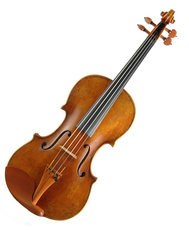About the Suzuki Method

The Suzuki Approach, based on the so-called "mother-tongue" method, differs from traditional methods of teaching instrumental music because it involves the student at a very early age, thus necessitating much participation by a parent in the role of home teacher. Some of the basic principles and ingredients are:
- Begin as soon as possible. Dr Suzuki recommended that ability development begin at birth. Formal training may start by age 3.
- Move in small steps. So the child can master the material with a total sense of success, thereby building their enthusiasm for learning. Each child progresses at their own pace.
- The parent or care giver attends all lessons so that they understand the learning process, and can feel secure when working with the child each day as the home-teacher. The most important single ingredient for success is the parent's willingness to devote regular time each day.
- Daily listening to recordings of the Suzuki repertoire, as well as classical music, is the nucleus of the Suzuki approach. This derives from the way all children learn to speak their native language.
- Postpone music reading until the child's aural and instrumental skills are well established, just as we teach children to read after they can speak.
- Create in lessons and practice an enjoyable learning environment so that the child's motivation comes from enthusiasm and desire to please.
- Regular group playing and activities with peers. This leads to the early involvement in Chamber and orchestral music.
- Encouragement to perform publicly in recitals or concerts. This is both a positive motivation and builds self-confidence.
- Foster an attitude of cooperation, not competition among students, or supportiveness for each other's accomplishments.